4 Best Free USB Flash Drive Benchmark Tools
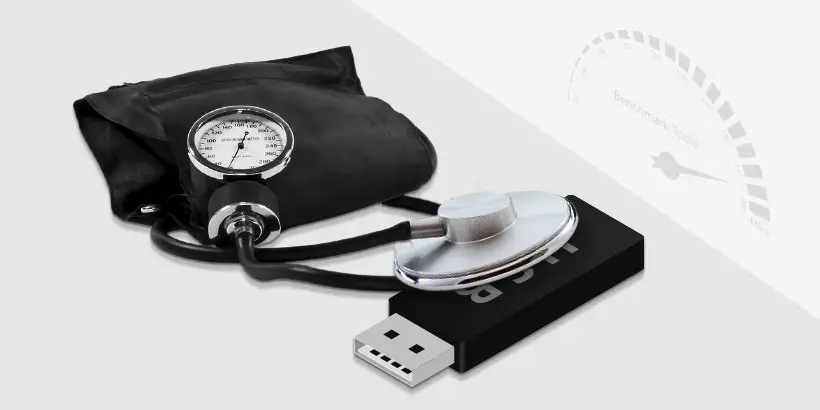
After buying a new USB flash drive, some users would like to test the read and write speed to measure performance of the USB drive. And USB flash drive benchmark software are handy measurement tools. This article is going to recommend you 4 best free USB flash drive benchmark tools to test USB flash drive read and write speed.
What is a USB flash drive benchmark tool?
Benchmarking is the process of running software to measure the transfer speeds in various situations like sequential and random, which has been used to test disk speed for years. A USB flash drive benchmark tool is an assistant to help users to test read/write speed of USB flash drives.
Generally, a USB flash drive benchmark tool usually test read and write speed by transferring chunk size file varying and generated by itself to represent the speed of a USB flash drive under various scenarios such as sequential, random and mix.
Explanation of common terms in a USB flash drive benchmark tool
Total Length: the total amount of data set by users to be transferred.
Generally, the larger users set, the less interruption will data cache affect and the result will be closer to fact. But the drawback is too large data being written in will affect endurance of flash drive badly.
Test Mode:
Sequential read/write: Sequential read/write is a disk access pattern whereby large contiguous blocks of data are read from OR written to adjacent locations on the surface of a USB flash drive.
Random read/write: Random read/write is another disk access pattern whereby data are read from OR written to nonadjacent locations on the surface of a USB flash drive.
OR: abbreviation for "operating room."
Queue Number: queue up a bunch of asynchronous read/writes in the drive, and the drive does them as quickly as it can.
Thread Number: set up how many threads to be used to finish the disk speed test.
Test Mode: choose a mode to test, which can be Sequential, Random, and Sequential & Random.
Cool Down Time: set up the cool down time to reduce the hard drive temperature before it continues with the next test.
4 practical USB flash drive benchmark tools
Crystal Disk Mark
Crystal Disk Mark is probably the most famous USB drive speed tool. Users can choose either portable, installer, or themed versions of the software.
Choose the USB flash drive you want to test and clicking All will set benchmarking on.
Or click on every green block in front of showing-result box and start one specific test criteria.
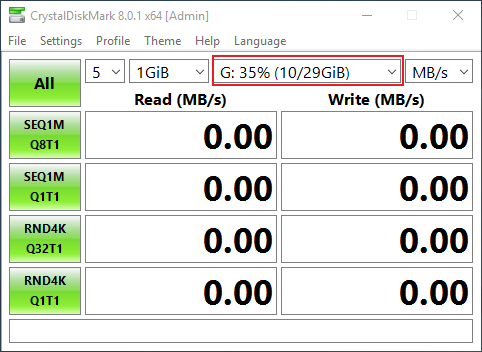
Go to Profile tab, and select the measurement users want. In the Settings tab, there are more details about Profile which users can adjust like test type, block size, queues quantity and threads.
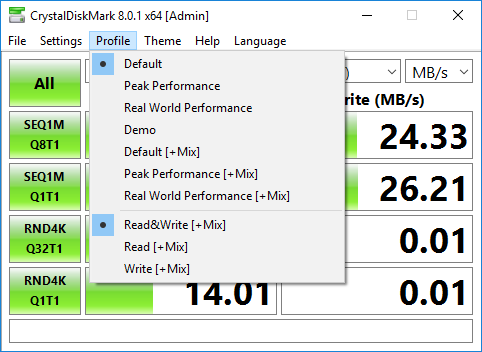
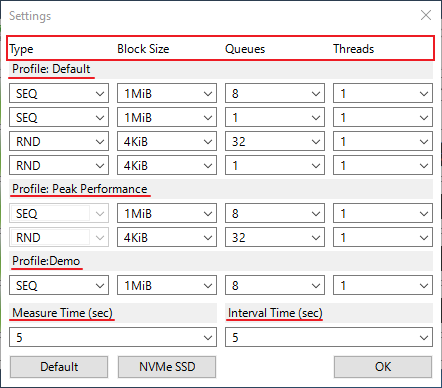
And the result could be saved in text or image.
MiniTool Partition Wizard
Tens of users favor MiniTool Partition Wizard. In fact, it's an all-in-one software that offers features such as format partition, check file system, align SSD partition, measure SSD performance, convert FAT to NTFS and Disk Benchmark and Space Analyzer to bring users the best experience.
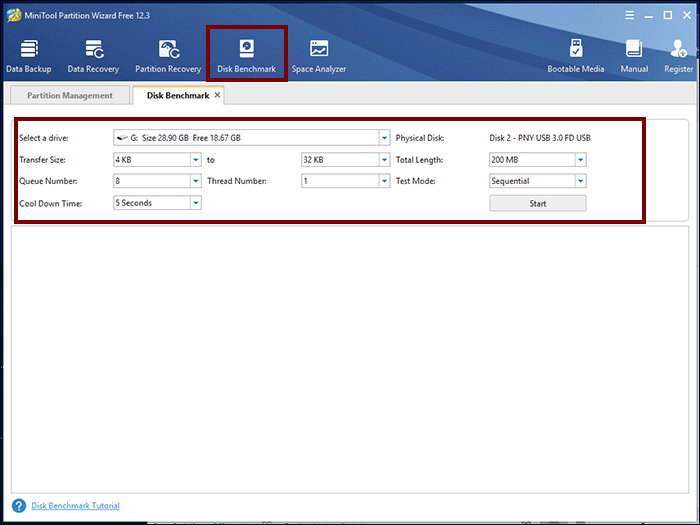
Open MiniTool Partition Wizard software, and go to Disk Benchmark tab.
Arrange the settings in the upper part, and click OK.
MiniTool Partition Wizard could only test out average read/write speed. And the result will be represented in an intuitive clustered bar.
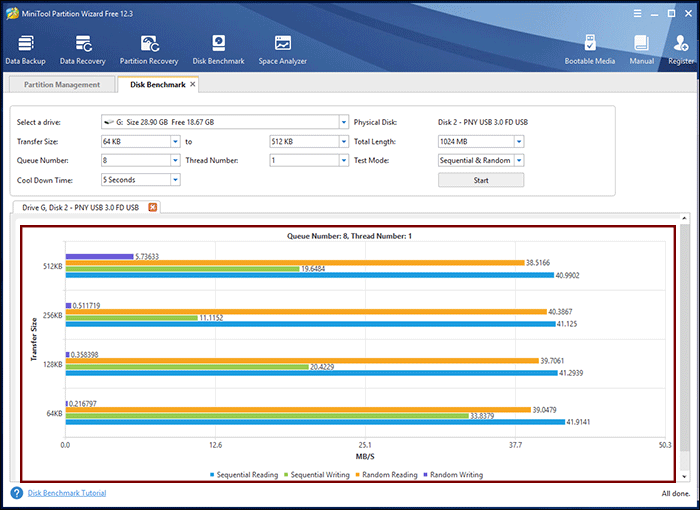
Parkdale
For green hand to USB flash drive benchmark, it's nice and friendly.
First, it has Quick Access. In this mode, users just need to choose their USB flash drives and set up file size as well as block size, plus a simple Start click. And it's already set to test in sequential and random mode.
It facilitates users to select multiple drives; these will be tested one after the other and the results will be written to a log file so that they can easily compare multiple drives.
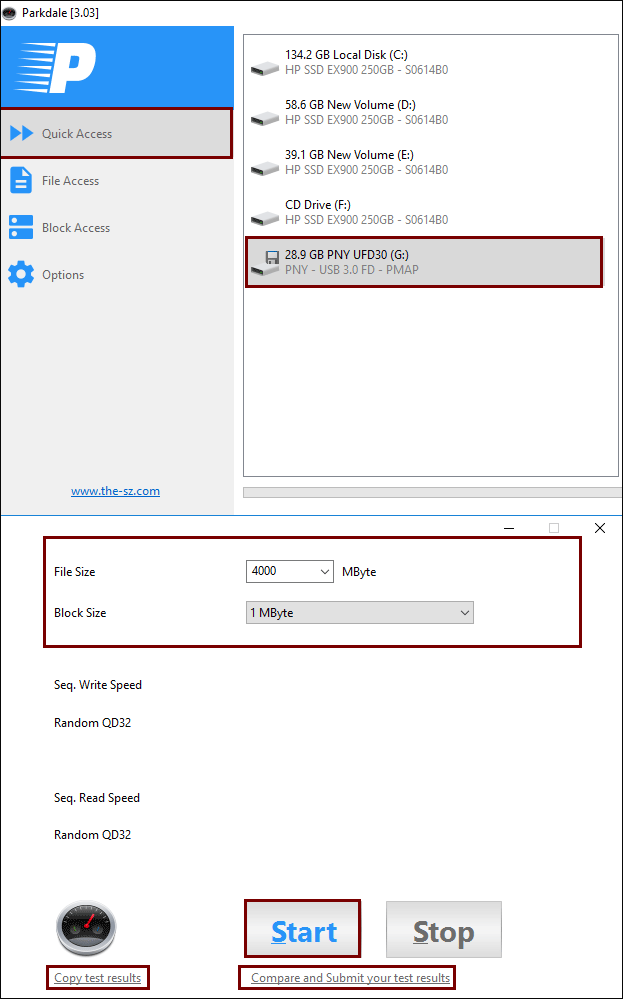
It will calculate the average sequential and random read/write speed for users and make a speed assessment of USB flash drive. Moreover, users can copy their test results or compare and submit them in Parkdale website.
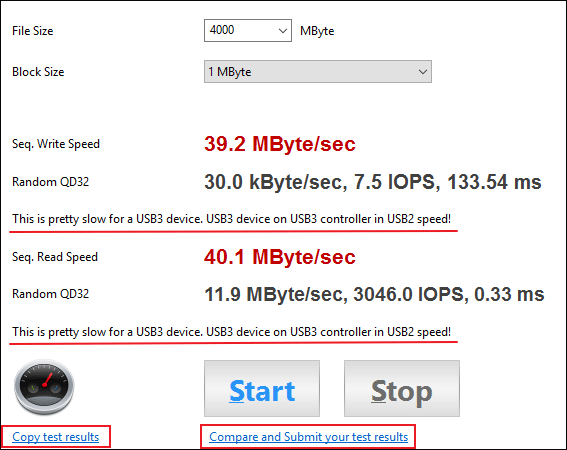
Speaking of File Access, it's like the test method most people use to measure the speed of USB flash drive - write a large file into the USB flash drive.
Choose File Access, select USB flash drive in Test File and then choose File Size. Click Write and this software will write a file whose size is set by users. And also, it will calculate an average write speed.
In the same way, users can get the read speed.
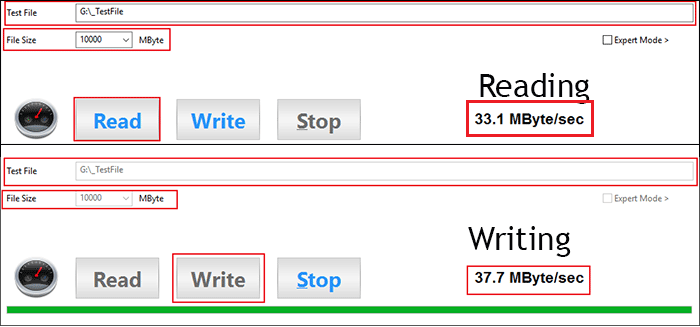
The test data from Block Access is read from / written onto the disk sectors directly without using the filesystem. And friendly to users, it offers a block access information to explain its algorithm.
Flash Memory Toolkit
The Flash Memory Toolkit program combines a wide range of functions that allows users to fix a USB flash drive: check for reading errors using tests and benchmarks, restore the original functionality.
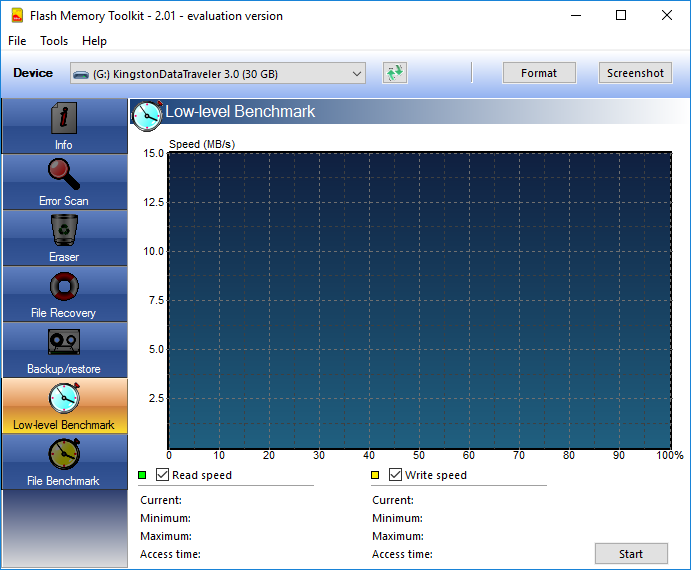
It has two functions for users to test their USB flash drive speed - Low-level Benchmark and File Benchmark.
The Low-level Benchmark measures the raw performance. The speed is shown in MB/s. It shows current speed, minimum speed and maximum speed and measures access time and average speed. And results are not only shown in text but also shown in graphics. But note that writing speed can only be measured in professional version when using this feature.
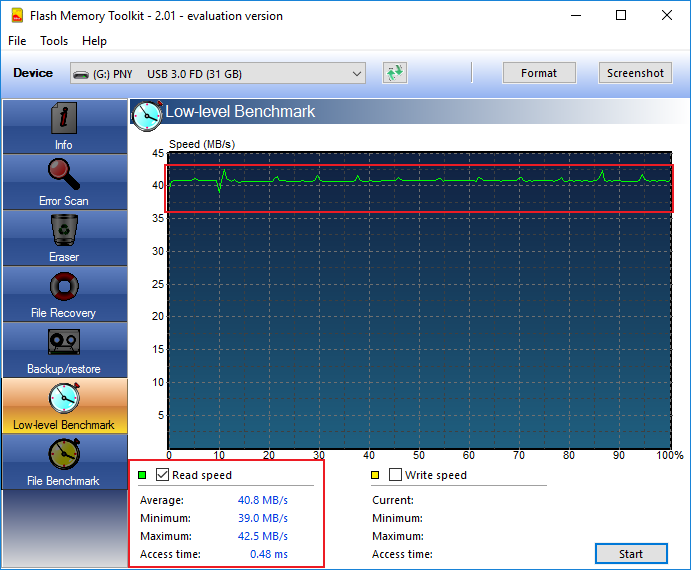
File Benchmark can measure the real-world performance by checking how long it actually takes to read and write files with different file size.
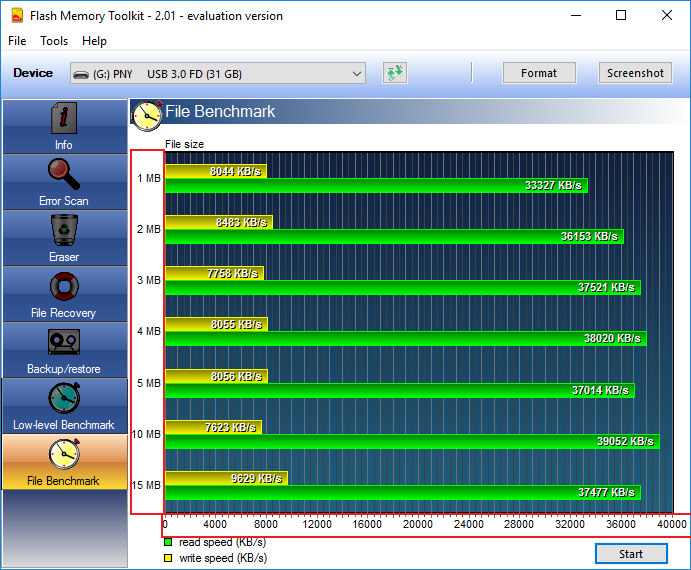
During benchmarking files Flash Memory Toolkit checks how long a file of a certain length is copied and read to/from the USB flash storage.
By the way, it could format your USB flash drive.
Summary
| Crystal Disk Mark | MiniTool Partition Wizard | Parkdale | Flash Memory Toolkit | ||
| Test Mode | Sequential | √ | √ | √ | √ |
| Random | √ | √ | √ | √ | |
| Mix (Seq & Ran) | √ | √ | √ | √ | |
| Result | Avg. Read/Write | √ | √ | √ | Low-level Benchmark: Read-speed only; File Benchmark: both read and write speed |
| Peak Read/Write | √ | × | × | Low-level Benchmark: Read-speed only; File Benchmark: both read and write speed |
|
| Access Time | √ | × | × | √ | |
| Advantage |
· professional benchmark tool · detailed settings · various profiles · easy to use · the largest test file is 64GiB · result could be saved in both image and text |
· results will show in an intuitive clustered bar |
· diverse access · multiple drives could be tested at one time · make an assessment of speed results · compare and submit users' test results · block access info · result could be copied in text · the largest test file is 10GB |
· shows current speed during benchmarking · gets minimum speed and maximum speed · measures access time and average speed · test speed with large test file up to 10GB · offers screenshot feature to record speed test |
|
| Disadvantage | · couldn't show avg. speed and peak speed at the same time |
· could only test out average read/write speed · the largest test file could only reach to 4GB · doesn't offer 'save' feature itself |
· users have little access to arrange the test |
· evaluation version only measures read speed in Low-level Benchmark · users have little access to arrange the test |
|




















